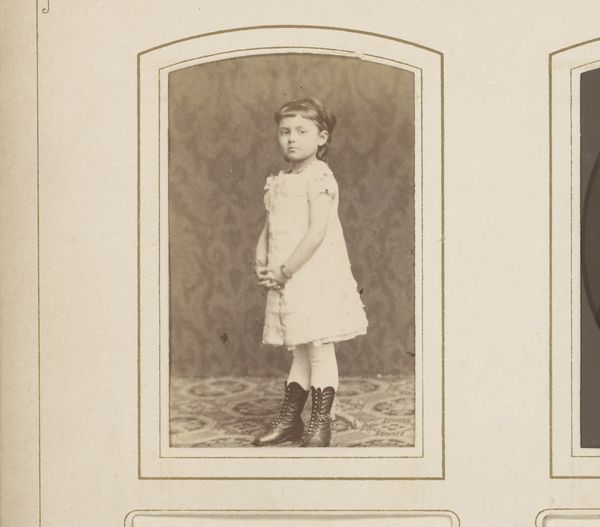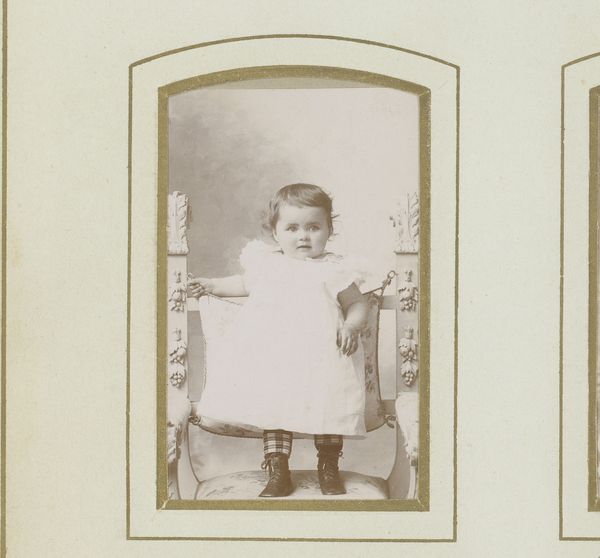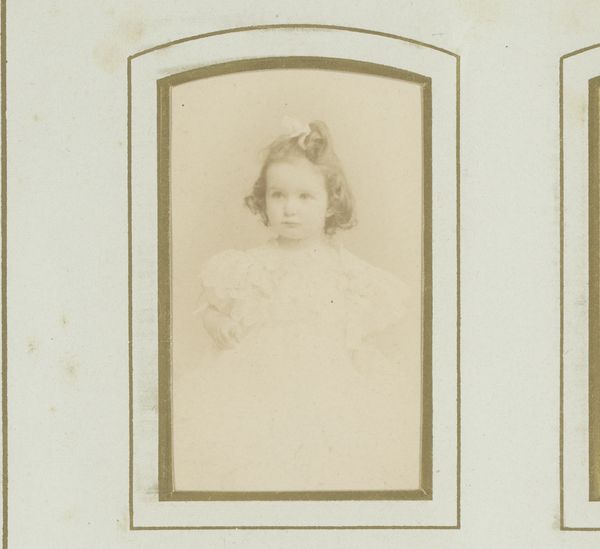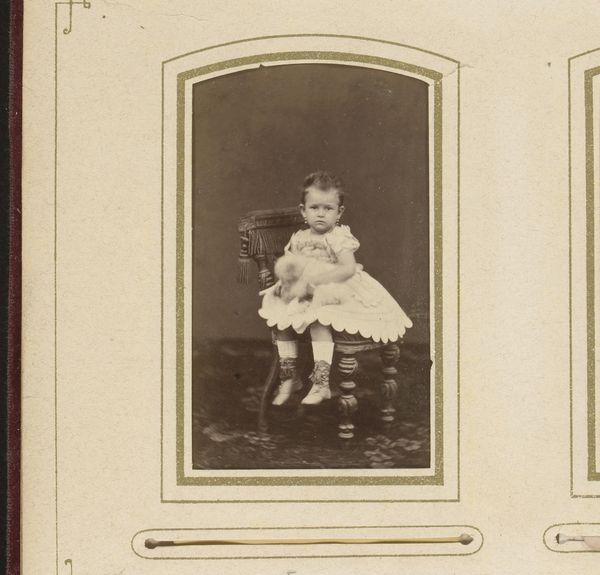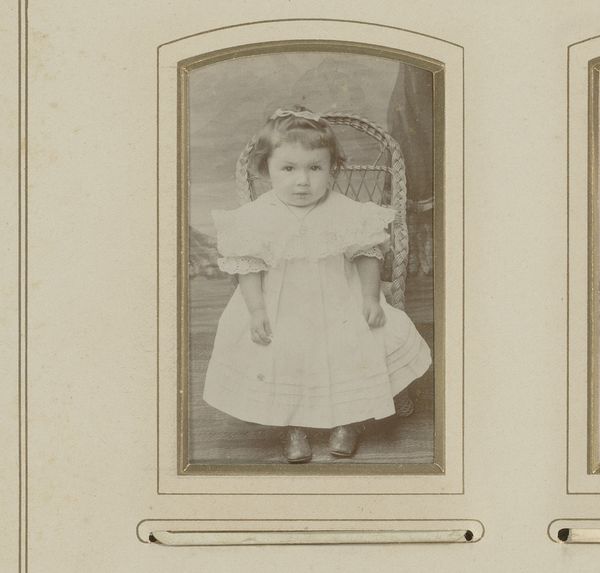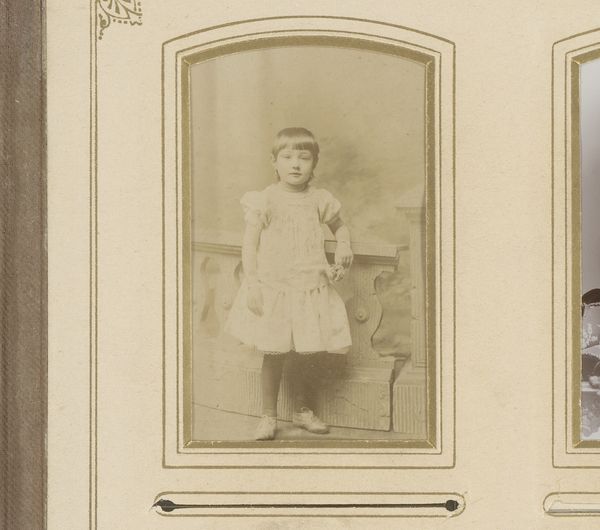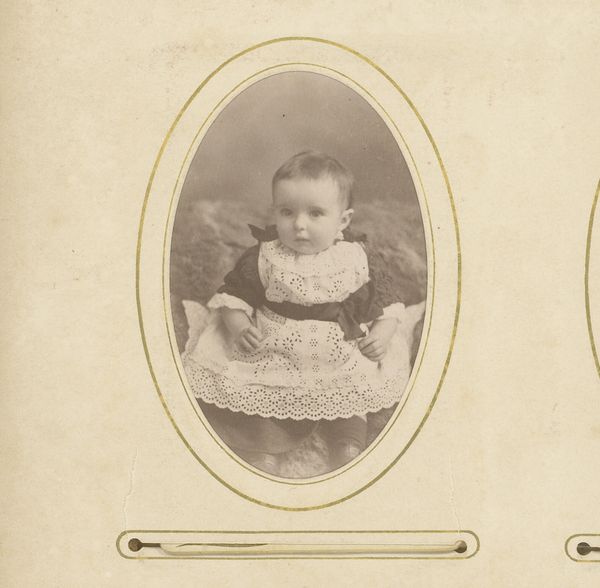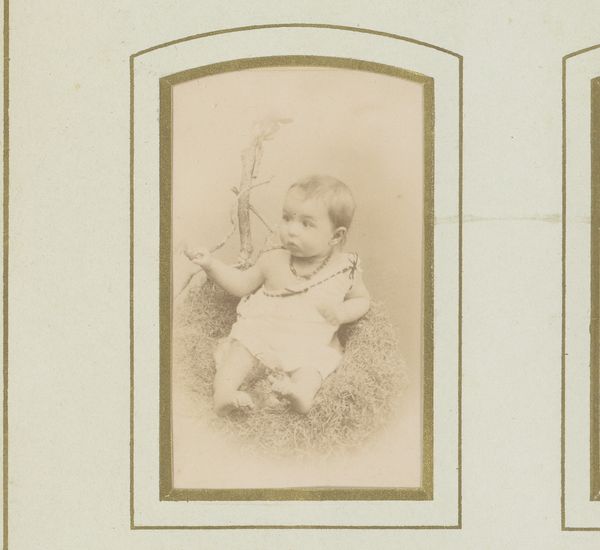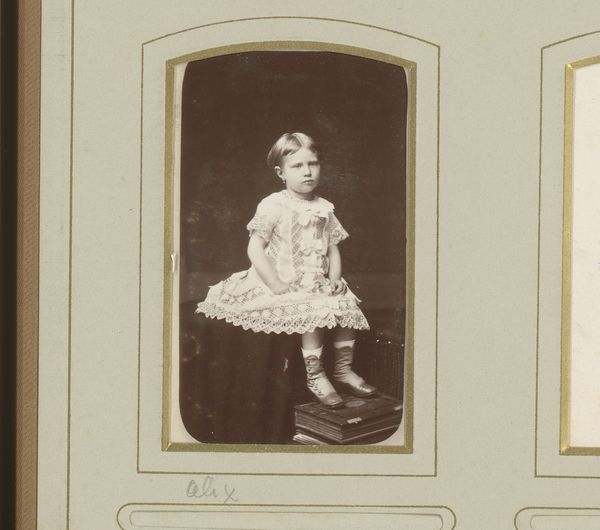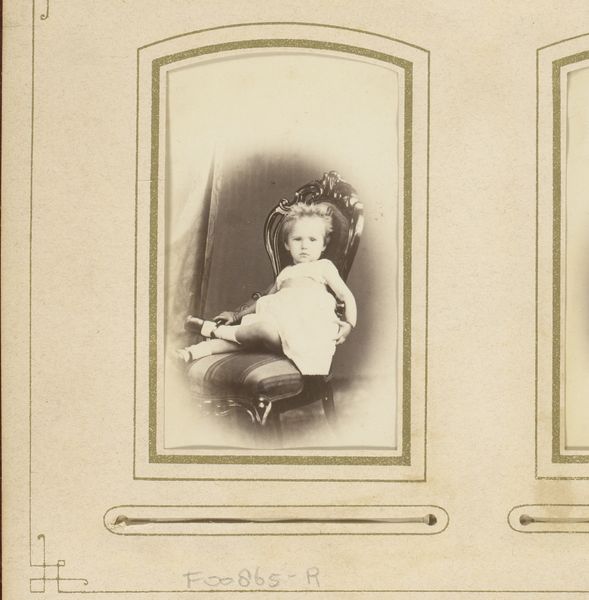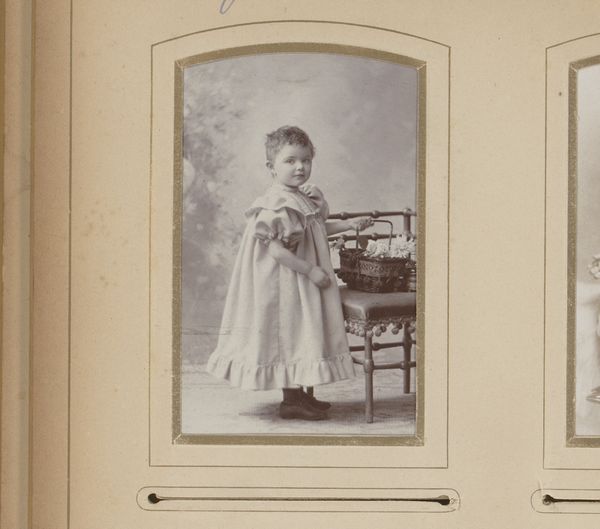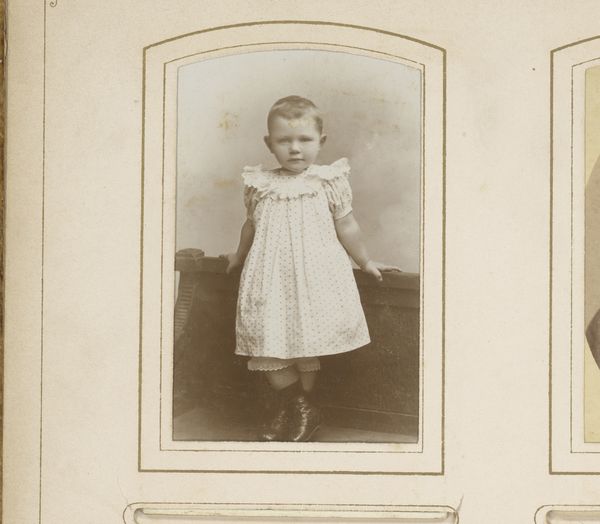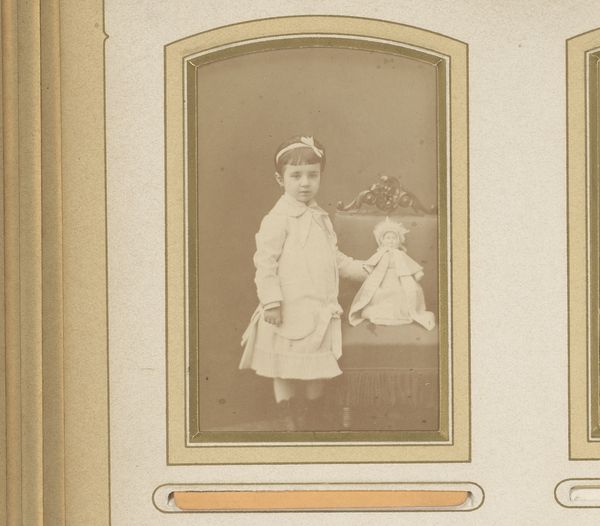
photography, gelatin-silver-print
#
portrait
#
photography
#
gelatin-silver-print
#
realism
Dimensions: height 84 mm, width 50 mm
Copyright: Rijks Museum: Open Domain
Curator: Looking at this gelatin silver print, entitled "Portret van Madeleine Verluise," created sometime between 1880 and 1920 by Alphonse Théodore Acquart, I'm immediately struck by its delicate composure. There’s an inherent formality yet the gaze is unexpectedly open. Editor: Yes, there's definitely a sense of poised innocence to it. The child is dressed in white with a lace-trimmed dress, holding what appears to be a small ball, a seemingly privileged young girl of her time, which is an immediate marker of social class and gendered expectations of girlhood. The material quality of the clothing – the lace, the probable quality of the fabric - speaks volumes about consumption and privilege. Curator: Exactly. The process of creating such a photograph in that era would have involved specific chemicals, paper types, and studio setups – the photographer’s expertise and access to resources were crucial. And it's mounted in a frame, presumably by a craftsman specializing in framing which further underscores production layers. Editor: And what about the implications of such portraiture, given photography's development and increasing accessibility at the turn of the century? Were photographic studios merely capturing individual likenesses, or were they reproducing visual ideals and reinforcing power structures regarding what lives were worth memorializing and preserving for generations? How did these photos perpetuate particular social and gender norms, setting parameters for children’s representation and what a child should aspire to be? Curator: Interesting points, how a piece of manufactured photographic paper also holds social meaning! It calls attention to photography’s role in normalizing codes. This object also serves a purpose as a marker within the family home of identity, the making of self. This image had to be made to mean. Editor: The careful arrangement of Madeleine’s pose, the props such as the ornamented pillar, they are telling us as much as her sweet dress does. These details signify how we view children and construct what childhood signifies in different social classes, and also highlight a gender-based history. Curator: Thinking about its afterlife too; someone chose to keep this print preserved for so long – further elevating this image’s perceived significance and longevity through acts of care. Editor: Absolutely, we’re inheriting an immense amount through one “simple” object! This portrait holds far more than just one girl's likeness - it contains societal expectations and visual frameworks ready to be deconstructed.
Comments
No comments
Be the first to comment and join the conversation on the ultimate creative platform.
